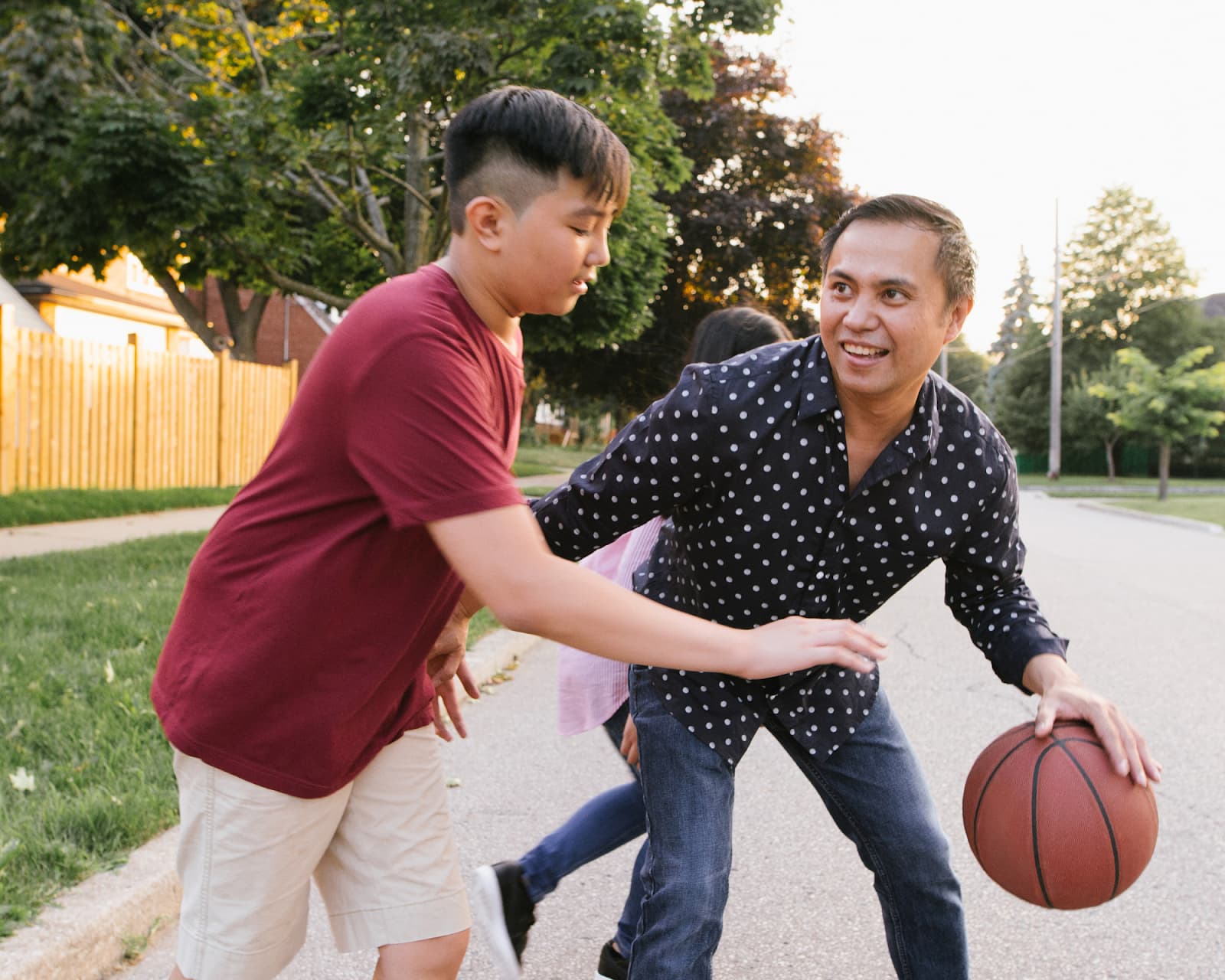Reactive Attachment Disorder (RAD) can create a heartbreaking reality for parents – a teenager who seems perpetually detached, distrustful, or even hostile. To understand this struggle, we must examine the intricacies of attachment disorders and their impact on a child’s psychological development.
Attachment disorders arise when the typical bond between a child and caregiver is disrupted early in life. RAD stems specifically from inadequate emotional nurturing and care in early childhood. It’s critical to distinguish RAD from other attachment issues like Disinhibited Social Engagement Disorder (DSED) to properly address the unique challenges.
This article explores RAD in depth for parents – recognizing signs, understanding root causes, and navigating diagnosis and treatment options. We emphasize the importance of healthy attachments and guide available support systems for families facing this complex condition.
Understanding Attachment Disorders
RAD and DSED emerge from early caregiving disruptions. RAD involves avoidant behavior, emotional dysregulation, and difficulty forming attachments, often appearing by age 5. Underlying causes can include foster care instability or separation from primary caregivers. Children may internalize distress and stop seeking comfort, compounding social challenges.
Treatment aims to create a secure, nurturing environment through therapy and parenting education focused on rebuilding healthy relationships and attachments.
The Path Forward:
- Therapy to address thoughts, behaviors, and interpersonal skills
- Parenting guidance for foster/adoptive families
- Establishing a reliable sense of safety and trust
- Sustained positive interactions and family therapy
Overcoming attachment disorders requires patience, structure, and expert collaboration. But through this dedicated approach, children can develop secure attachments.
Two Main Types
Attachment disorders profoundly impact a child’s ability to forge healthy bonds. The two primary types are Reactive Attachment Disorder (RAD) and Disinhibited Social Engagement Disorder (DSED).
RAD is characterized by withdrawn, emotionally unavailable behavior and an inability to form meaningful attachments, often stemming from neglectful care.
In contrast, DSED involves a lack of inhibition in social interactions. Children overly and indiscriminately approach or interact with strangers, showing no wariness typical for their age. This uninhibited social approach puts them at potential risk.
Recognizing the distinct symptoms of RAD and DSED allows mental health professionals and caregivers to create an effective, tailored treatment plan where children can begin forming secure attachments.
Signs and Symptoms of RAD
RAD stems from challenges in forming meaningful bonds with primary caregivers. Recognizing key signs is crucial for diagnosis and treatment:
- Actively avoiding affection or physical touch
- Emotional dysregulation with extreme/disproportionate outbursts
- Withdrawal from social interactions; lack of responsiveness
- Oppositional, defiant behavior toward authority figures
- Apparent lack of guilt, remorse or sense of conscience
Behavioral Indicators:
- Social isolation, preferring to be alone
- Severe, unexplained aggression
- Controlling behavior as a coping mechanism
- General lack of trust in others
- Disconnect between actions and emotional reasoning
Emotional Indicators:
- Anger, sadness, anxiety, hopelessness
- Unexplained irritability, fearfulness around caregivers
- Lack of social engagement and detached responses
- Struggles to regulate and express emotions appropriately
Identifying these patterns guides mental health experts in developing comprehensive treatment plans for teens with RAD.
Causes of RAD
While RAD doesn’t affect every neglected child, it often arises when a child’s needs are consistently ignored or met with abuse/hostility in early life. These negative care experiences shape the brain’s developing attachment pathways, promoting insecurity and distrust.
Early Childhood Trauma
Trauma in infancy through early childhood significantly increases RAD risk. Unstable, unresponsive care or abrupt separations from primary caregivers can devastate a child’s ability to form healthy emotional bonds and attachments.
Inconsistent Caregiving
A high turnover of caregivers provides no chance to establish trust and secure attachment. This unfortunate situation, common in the foster system, is a leading contributor to developing RAD. Children require reliable, continuous care to learn how to maintain meaningful connections.
The roots of RAD provide crucial context for parents and professionals treating attachment issues in teens. Understanding these causative factors guides personalized, comprehensive care.
Diagnosis and Treatment
Diagnosing RAD is a nuanced process requiring evaluation by a pediatric psychiatrist or psychologist skilled in attachment disorders. They’ll observe the teen’s interactions with caregivers, assess behavioral patterns, and determine if symptoms align with DSM-5 criteria like persistent social/emotional issues and a history of insufficient care.
Though signs typically appear before age 5, RAD can persist into the teen years if untreated. The diagnostic process rules out other conditions like autism spectrum disorder.
Treatment is multimodal, utilizing attachment therapy, behavior management therapy, and caregiver education/training. The overarching goals:
- Improve the teen’s emotional/behavioral regulation
- Enhance communication and social skills
- Equip caregivers with strategies for handling issues
- Guide the family toward more secure attachments
An individualized, professionally guided treatment plan is vital for teens and caregivers navigating RAD together.
Assessing Attachment Issues
A comprehensive assessment by a mental health professional is key to identifying potential RAD in teens. Through observations and discussions about behavior over time, clinicians recognize patterns indicative of an attachment disorder.
They’ll evaluate the teen’s emotional responsiveness and ability to seek comfort/affection from caregivers in stressful situations. The child’s history also provides important context.
While diagnostic criteria state signs must appear before age 5, many children don’t receive the necessary support early on. Their attachment struggles can persist into adolescence, so assessments carefully distinguish RAD from other developmental conditions with overlapping symptoms.
Professional Treatment
For parents of teens with RAD, engaging mental health support is essential for effective treatment. Key elements often include:
Family Therapy – To strengthen familial bonds and enhance household dynamics in a therapeutic setting.
Parental Education – Guidance on identifying triggers, developing coping strategies, and understanding RAD to promote empathy.
Tailored Therapy – Traditional clinical therapy supplemented by innovative modalities like art, equine, or wilderness-based experiential therapies matched to the teen’s needs.
Alternative Therapies
Not all marketed RAD treatments have evidence backing their efficacy and safety. Holding therapies, for instance, raises ethical concerns and lacks proof of benefits.
Instead, evidence-based options like play therapy and behavior management therapy can address core attachment issues without potential harm. Professionals closely monitor progress and adjust treatment plans as the teen develops.
With comprehensive, trauma-informed care, teens struggling with attachment can find paths toward more secure relationships and improved mental health.
The Importance of Healthy Attachments
Secure attachments between children and caregivers provide the crucial foundation for emotional well-being and the ability to develop trusting relationships throughout life. When these primary bonds are unstable or missing, children face much higher risks of developing conditions like Reactive Attachment Disorder.
RAD can significantly disrupt a child’s capacity for emotional expression, trust, and social functioning into adolescence and adulthood. But repairing attachment difficulties is possible through:
- Patience and a commitment to providing consistent nurturing care
- Therapeutic interventions guided by mental health experts
- Fostering self-esteem and facilitating positive interactions
- Establishing reliable routines to promote feelings of safety
With this approach, young people affected by unhealthy attachments have real potential to heal and cultivate secure, loving bonds.











0 Comments